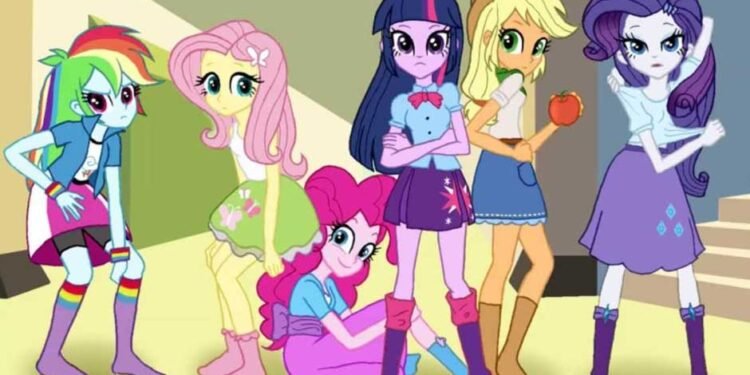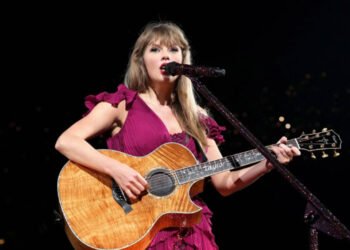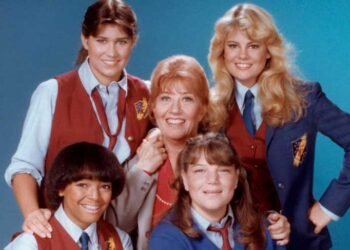Introduction: The Evolution of Friendship is Magic
The My Little Pony franchise has captivated generations with its vibrant characters and heartwarming tales of friendship. Originating as a toy line, it blossomed into a global phenomenon, particularly with the success of “My Little Pony: Friendship is Magic.”
In 2013, a unique spin-off emerged, “My Little Pony: Equestria Girls,” which ventured into an entirely new dimension. This series introduced the beloved pony characters in a human world, attending high school and navigating teenage life.
This bold premise initially met with mixed reactions but quickly carved out its own dedicated fanbase. It offered a fresh perspective on the core themes of friendship and magic, adapting them to a contemporary, relatable setting.
The Genesis of Equestria Girls: A New Dimension
The concept behind Equestria Girls was to transport the magical essence of Equestria into an alternate human universe. This allowed for a creative exploration of familiar characters in unfamiliar, yet exciting, circumstances.
The narrative typically begins with Princess Twilight Sparkle, or another pony, traveling through a magical mirror that acts as a portal. Upon passing through, they transform into human teenagers, retaining their personalities and core traits.
The inaugural film, simply titled “Equestria Girls,” set the stage for this new world. It saw Twilight Sparkle journeying to Canterlot High to retrieve her stolen crown, encountering human versions of her pony friends along the way.
Core Characters and Their Human Counterparts
The heart of Equestria Girls lies in its vibrant cast of characters, who are human counterparts of the original My Little Pony mainstays. These include the studious Twilight Sparkle, the reformed antagonist Sunset Shimmer, and the energetic Rainbow Dash.
Also central to the group are the honest Applejack, the shy Fluttershy, the cheerful Pinkie Pie, and the fashion-forward Rarity. Each character retains their distinct personality, but their human forms and high school setting add new layers to their development.
Their pony traits are cleverly translated into their human personas; for example, Rainbow Dash’s athleticism shines on the soccer field, while Rarity’s flair for design is evident in her fashion club activities. This continuity allowed fans to connect with their favorite characters in a fresh way.
Key Themes: Friendship, Acceptance, and Self-Discovery
At its core, Equestria Girls continues to champion the central theme of friendship, echoing the values of its parent series. The characters consistently learn the importance of teamwork, understanding, and mutual support in overcoming challenges.
Another prominent theme is acceptance, both of oneself and of others. Characters often grapple with insecurities or misunderstandings, ultimately learning to embrace their unique qualities and appreciate the diversity within their friend group.
Sunset Shimmer’s journey, in particular, highlights the theme of self-discovery and redemption. Her transformation from a misguided antagonist to a valued member of the group serves as a powerful narrative arc about growth and forgiveness.
The Equestria Girls Media Franchise: Films, Specials, and Series
The success of the initial film led to a flourishing media franchise, expanding the Equestria Girls universe significantly. This included several full-length animated films, each building upon the previous narrative.
Notable films include “Rainbow Rocks,” which introduced a musical battle, “Friendship Games,” focusing on inter-school competition, and “Legend of Everfree,” exploring a magical summer camp. These films deepened character relationships and introduced new magical elements.
In addition to the movies, the franchise produced numerous animated specials and a popular web series. These shorter formats allowed for more frequent storytelling, exploring everyday high school dilemmas and further developing the characters’ lives.
Cultural Impact and Legacy
My Little Pony Equestria Girls successfully broadened the appeal of the My Little Pony brand, attracting both existing fans and new audiences who might be drawn to its high school drama and relatable themes. It demonstrated the versatility of the franchise.
Its contribution to children’s entertainment lies in its consistent promotion of positive social interaction, empathy, and empowerment. The series often tackled issues relevant to teenagers, such as bullying, self-esteem, and navigating social dynamics, with a hopeful message.
Ultimately, Equestria Girls has left a lasting influence, proving that stories centered on friendship and magic can transcend different forms and settings. It remains a beloved part of the My Little Pony universe, cherished for its unique blend of fantasy and everyday high school life.
Conclusion: The Enduring Magic of Equestria Girls
My Little Pony Equestria Girls has undeniably carved out a significant and memorable niche within the expansive landscape of children’s entertainment. Its seamless evolution from the beloved My Little Pony universe into a popular high school-themed franchise underscored its remarkable adaptability and enduring ability to enchant audiences.
Through its engaging narratives, relatable characters, and unwavering commitment to themes of friendship and self-discovery, the series offered a truly unique and immersive viewing experience. It powerfully illustrated that stories centered on positive values can resonate deeply with young audiences, even when presented in a new and unexpected format.
Ultimately, Equestria Girls stands as a compelling testament to the sheer power of well-told stories that celebrate camaraderie and personal growth. Its consistent ability to deliver heartwarming messages while maintaining its integrity as quality children’s programming guarantees that its legacy will continue to inspire and delight for many years to come.











